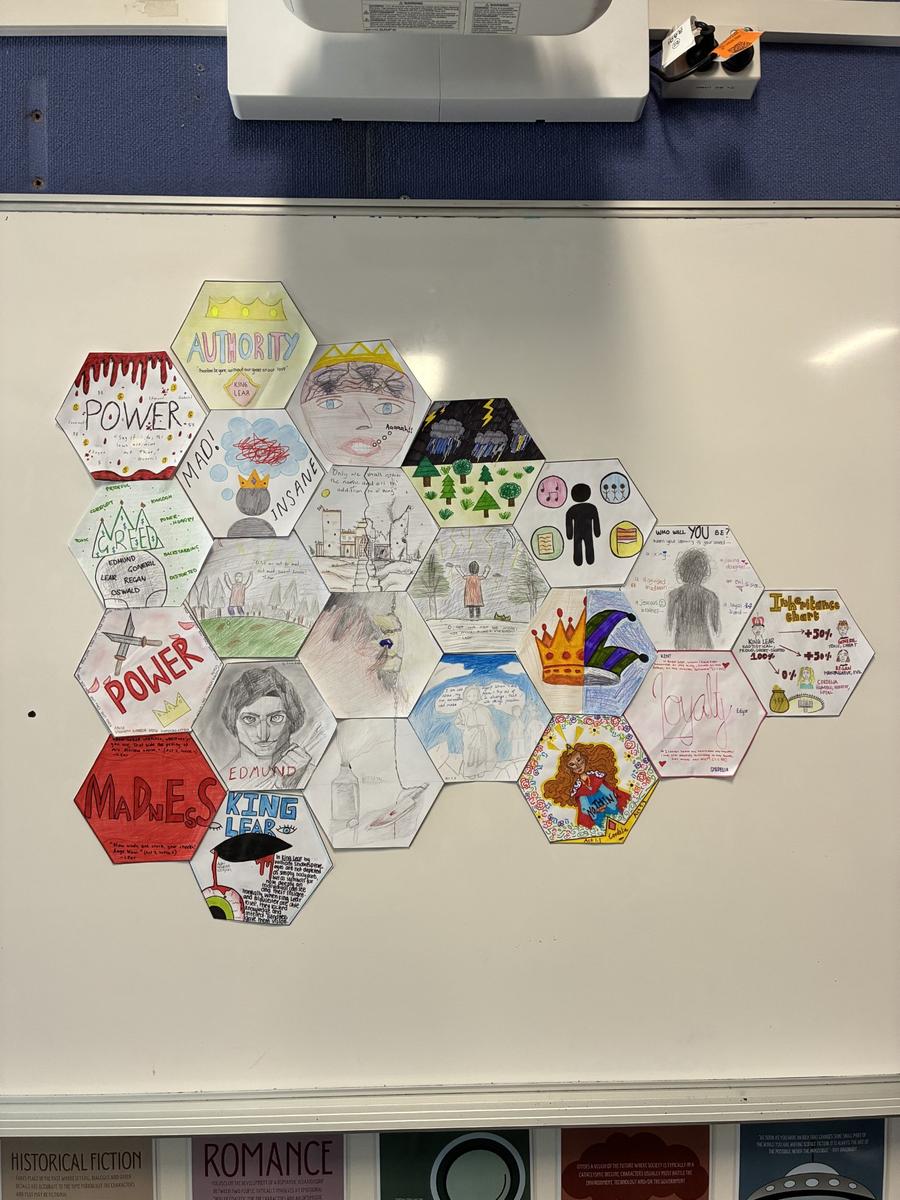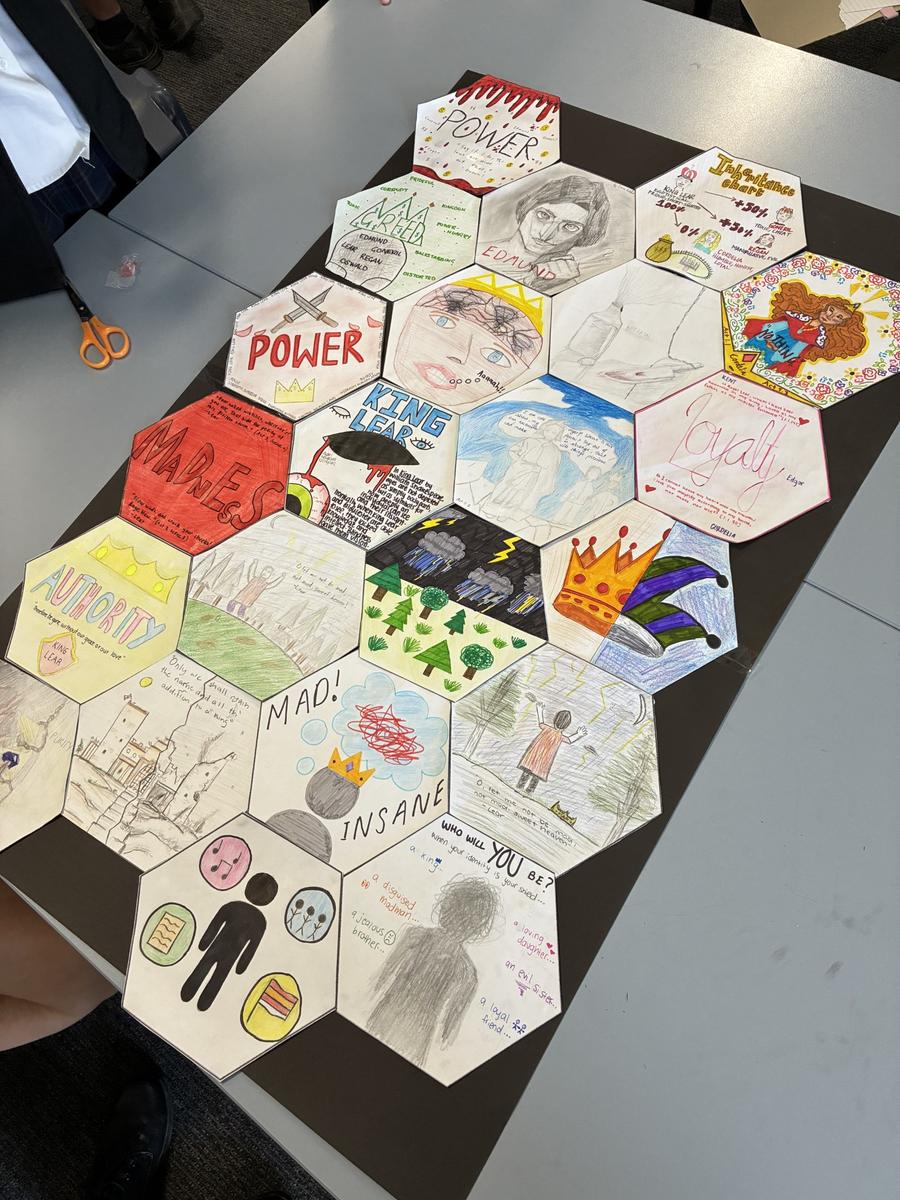English Faculty

Year 10 English
In Year 10 English, students have recently been engaging with William Shakespeare’s King Lear in a dynamic and thought-provoking way—through a strategy known as hexagonal thinking. This innovative approach allows students to deepen their understanding of key themes, characters, and symbols by exploring the complex web of connections that make Shakespeare’s tragedy so powerful.
Using hexagonal cards—each labelled with a significant idea, quotation, motif, or character—students were challenged to arrange them so that each side of a hexagon touched another with a meaningful connection. From loyalty and betrayal to madness and power, students discussed how concepts linked and overlapped, often debating the strength or weakness of certain connections. Could Cordelia’s silence be more closely linked to honesty or rebellion? Is Lear’s descent into madness a result of pride, grief, or divine justice?
This collaborative and visual method encouraged critical thinking, creative discussion, and deep textual analysis. Students reported that the process helped them see the play “in a completely new light” and allowed them to “make connections we hadn’t considered before.”
By physically manipulating ideas and justifying their placements, students moved beyond surface-level comprehension to grapple with the intricate moral and psychological questions that make King Lear such a timeless and challenging text.
Hexagonal thinking has proven to be not only a powerful tool for literary analysis but also an engaging way to foster classroom discussion, student voice, and deeper learning. We look forward to seeing this strategy applied to future texts across the English curriculum.







